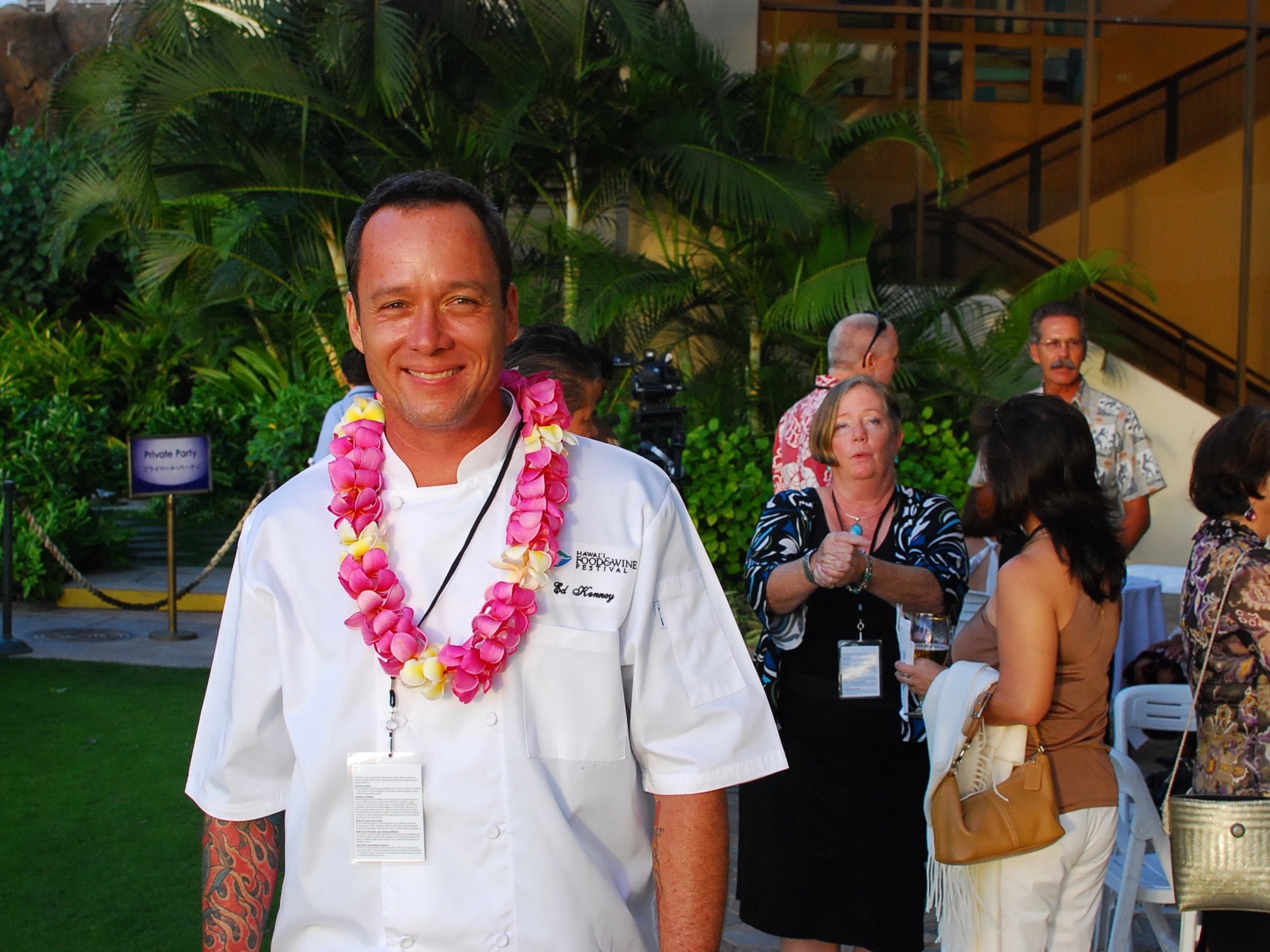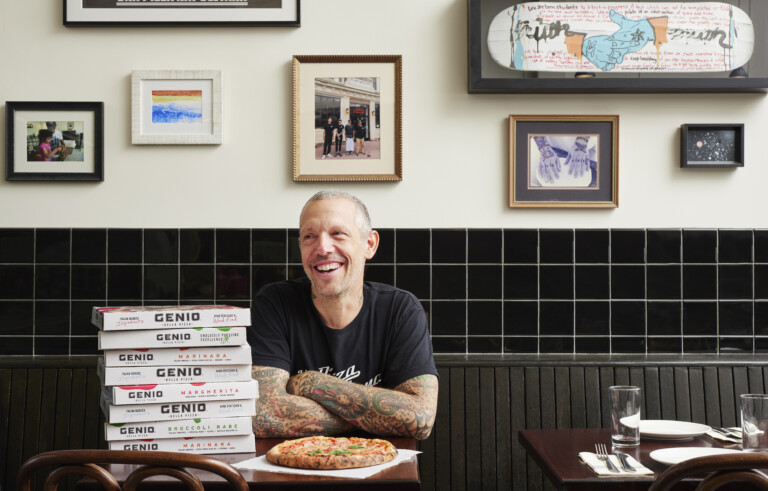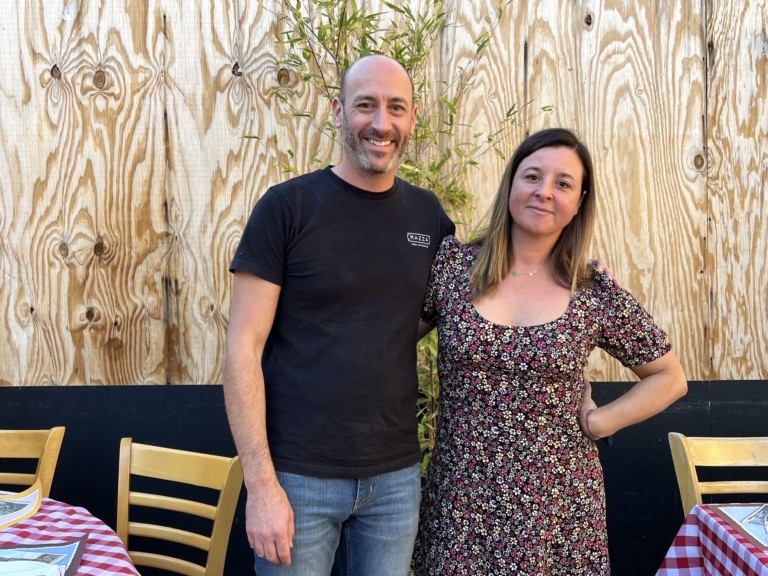Chef Ed Kenney is a Hawaii native who’s long been a proponent of local Hawaiian ingredients and culture, and now has two forums to showcase them: Town Kaimuki and lunch-only Downtown. We met in July at a Hawaii related event at Roy’s Los Angeles and spoke at the Hawaii Food & Wine Festival, where Kenney shared further insights.
Why is the Hawaiian Food & Wine Festival event important to you?
Well, I don’t want to paint a dismal picture, but Hawaii in some senses has diminished in culinary significance on an international scale. You’re hearing about what’s going on in Japan. You’re hearing about what’s going on in Spain, and obviously New York and San Francisco. 10, 15 years ago, Hawaii was the center of the Pacific Rim fusion movement. People have forgotten what we’re doing out here. What’s incredible is that Roy Yamaguchi and Alan Wong, through the contacts they’ve made over the past 25 years, have been able to put together a group of incredible international chefs. What sets us apart, and I think what really defines what’s going on here is that they demanded that all these visiting chefs use local ingredients. That goes back to – I mentioned it in Los Angeles – aloha aina, love of the land, love of that which provides us food. It’s a universal value set – I believe – but it’s really ingrained in the Hawaiian culture, and I love that these people have come from all over the world, and they’re able to see what we grow here, and be attached to what we grow here.
For example, Celestino Drago from Los Angeles, I had lunch with him yesterday, a lunch that he prepared, and he used taro, or poi, which is traditionally known as this grey, flavorless paste that’s the Hawaiian. He turned it into the most fluffy, light, delectable gnocchi that I’ve ever had in my life. It kills me. I’ve been trying for five years to make taro gnocchi, and he comes in off the plane, comes into the kitchen and works for a couple hours and just masters it. It’s unbelievable. I’m excited to see what everyone has in store tonight. I do tend to get a bit of an inferiority complex but we’ll see.
After eating at your restaurant, I don’t see any reason to do that. What’s the biggest challenge in operating more than one restaurant?
Obviously being in more than one place at more than one time, but the biggest challenge would have to be getting people in Hawaii to redefine the value of food. Traditionally, Hawaiians are all about lots of food, lots of carbs. It’s actually reflected in our health rates here, but recently we’ve seen a shift. People are valuing fresh food, local food. They’re seeing that their food choices make a difference, larger than their waistline or pocketbook, it has a bigger effect on society. That’s a challenge, but we’re slowly making ground way and we’re slowly redefining what food is and what they’re willing to pay for it.
To flip that question around, what’s the biggest advantage to having a restaurant on Hawaii?
Up until a few days ago, I don’t know, but now, if they do this thing every year, it’s probably a huge plus. Really, we’ve got the most ultimate growing climate. Unfortunately we see seed companies coming here and planting their seed corn and seed soy crops because they can get three lots of seeds out of the year. At the same time, we have tomatoes all year round, so what’s value to one is value to another, but it all translates to we’ve just got the best produce year round.
As far as criteria for dishes goes, how is it different at Town versus Downtown?
Well, it’s all rooted in the same principle, whatever comes in through the back door, whatever’s freshest, we’ll try to put it together and serve it on the plate and menu for the day. Downtown, it’s only lunch, it’s in the Financial District and we do 400 lunches in an hour-and-a-half time span, so it’s really geared towards sandwiches, soups, salads, those sorts of things, but at Town, we can express ourselves a little bit more. We spend more time on handcrafted pasta. That’s where we all our meat curing. They’re very similar in the value set, but they’re different because of the location.
What was your very first night like working in a restaurant kitchen, and where was it?
My very first night working in a kitchen was in college. I was a busboy. I did it for a very limited period of time and vowed that I would never work in a restaurant again…Then I came back and got into corporate America, and after about five years of that, I thought, “Hey, maybe the restaurant business isn’t so bad.” The rest is history.
What was that very first restaurant?
God, I can’t even remember. You know that.
Was it in Hawaii?
No, it was in Colorado. I went to University of Colorado, Boulder.
What do you look for when you’re hiring somebody to work in one of your kitchens?
Passion. Hire for desire. I probably got that from a book along the way or something, but really, the people that seek us out and kind of understand what we’re about, and surprisingly, many culinary students these days just want to be the next Top Chef, or they just want to be the next Alan or Roy, and you can tell the minute you meet them, but others they come and they start talking about farms and how they picked taro on the loi [pond] last weekend, or how they went fishing and fed their family. Those things kind of stand out to me.
Another thing we’ll do is if I get a feeling that person is someone that we’re interested in, I’ll say, “You know what, we need a new soup today. Would you mind making our soup of the day?” Totally off guard, and I’ll show them what we have in terms of ingredients and just let them go and see if they can make soup. It’s the ultimate test.
If you could only cook with one more protein, what would it be and how come?
You know that. You ate at the restaurant. It would have to be pig. Pork. And you know what sucks, is that pork has gotten so trendy recently. If I see another restaurant that has a pig diagram as their logo, it will make me go crazy, but it’s so good. Actually, I should clarify that. Shinsato Farm pork. It’s the only USDA certified pork farm or hog farm on Oahu. Third generation Okinawan family. They’re on 19 acres at the base of the Koala’a Mountain Range, the most beautiful tropical rainforest land you’ve ever seen. The meat tastes like the air smells. It’s just unbelievable. I’m kind of narrowing it down. And then if I were to narrow it down even further, it would probably have to be the hind shank of a Shinsato Farm hog.
Who’s the person you’ve never cooked with that you’d most like to cook with?
Michelle Obama.
How come?
I think the message that she sent in planting a White House garden, internationally, was like what America is serious about food, health and reconnecting to the earth. Her “Let’s move” initiative with getting kids out and active, eating regular food, saying no to KFC and Mickey D’s, it would probably have to be Michelle Obama.
One last question. How would your restaurant be different if it were in North Dakota?
Where? [laughter] North Dakota? You know what, I haven’t been to Noma in Copenhagen, but I imagine they are up against many of similar challenges, in that it’s not ideal growing weather. They’ve got 10, 11 months a year that it’s cold, but he has redefined food by really regionalizing it. You talk about terroir. A plate will have ingredients that came up within 10 feet of each other. So I’d like to think that in North Dakota – you caught me off guard – there may not be the market for that in North Dakota, but as far as growing goes, there’s got to be some sort of cultural history, some sort of indigenous flora and fauna that can be worked into a really special regional cuisine.









Leave a Comment